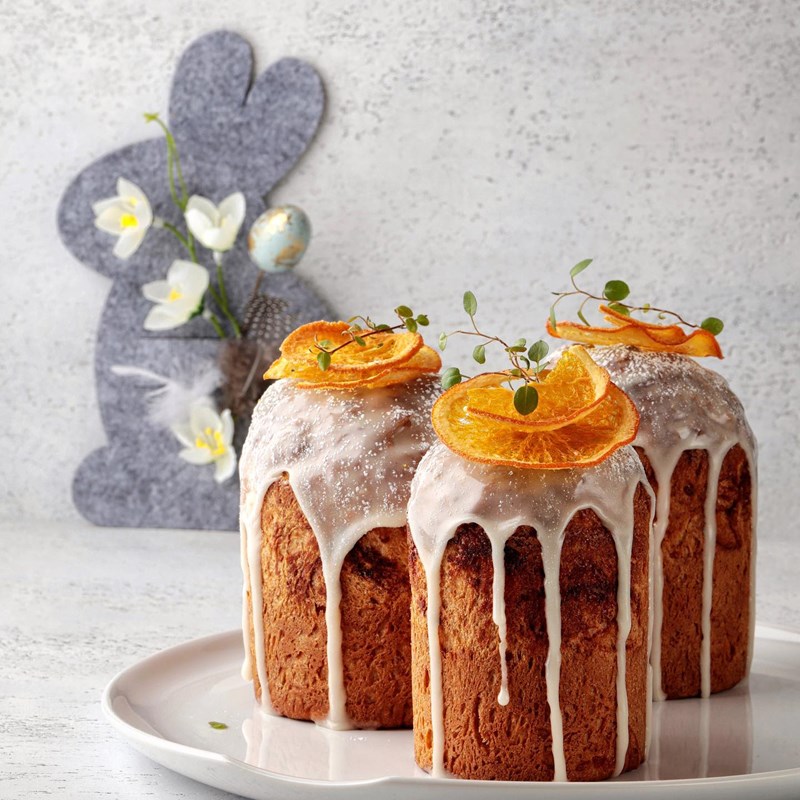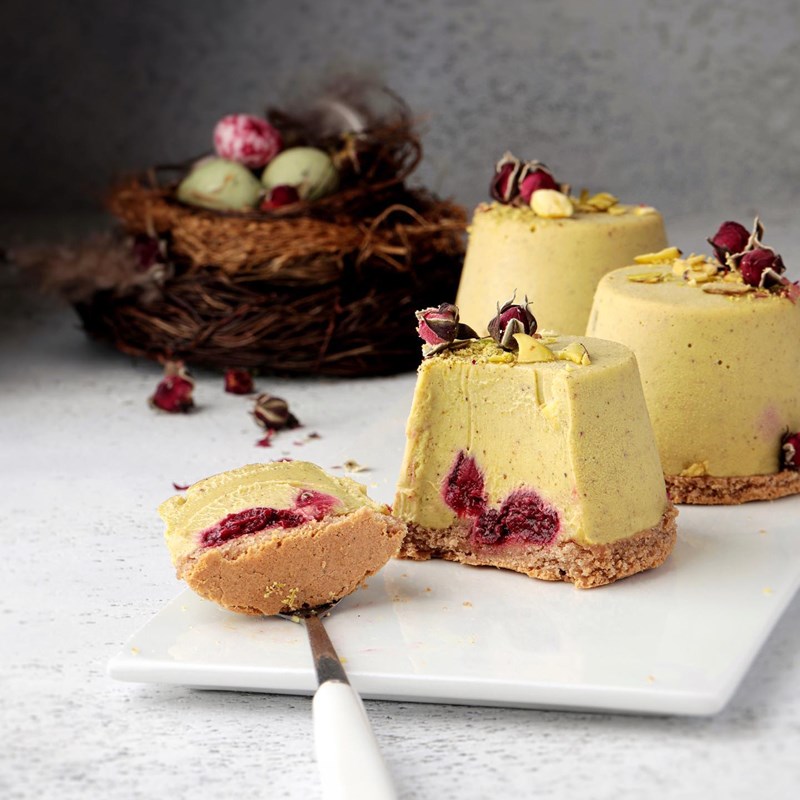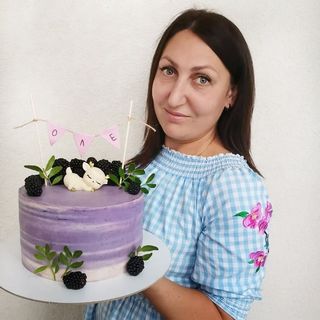Ingredients
Orange sugar
sugar
130g
4.55oz
0.52cup
8.71tbsp
orange zest
2pc
Leaven
water
80g
2.70fl oz
fresh yeast
33g
1.16oz
2.21tbsp
sugar
10g
0.35oz
0.67tbsp
strong flour
40g
1.40oz
2.68tbsp
The dough
strong flour
460g
16.10oz
1.84cup
30.82tbsp
eggs
110g
3.85oz
0.44cup
7.37tbsp
milk
70g
2.37fl oz
salt
1g
0.04oz
0.07tbsp
spices
to taste
orange sugar
butter
125g
4.38oz
0.50cup
8.38tbsp
candied orange peels
to taste
Icing
orange juice
20g
0.68fl oz
powdered sugar
100g
3.50oz
0.40cup
6.70tbsp
icing mix
50g
1.75oz
3.35tbsp
Method
Orange sugar
- Cut the zest into a thin layer, being careful not to touch the white part of the peel.
- Mash it together with sugar in a processor until smooth.
- Set aside for 10-15 minutes.
The leaven
- Crumble the yeast into a bowl, grind it with sugar, and dilute with warm water.
- Stir in the flour, cover the leaven with cling film, and set aside for 15 minutes in a warm place.
The dough
All the ingredients, except for butter, must be strictly at room temperature or slightly warmer (75-79F | 24-26C)!
- Mix the milk and eggs, and beat with a submersible blender.
- Cut the butter into 1*1cm (0.40*0.40 inch) cubes, and leave at room temperature just before kneading the dough.
- Sift the flour into the mixer bowl, and pour the active leaven.
- Start kneading the dough with the Hook attachment at a low speed, pouring the milk-egg mixture in a thin stream. Add the orange sugar, salt and spices. Without increasing the speed, knead the dough for at least 10 minutes.
- Next, gradually add the butter cubes to the dough, continuing kneading at a low speed. When the butter combines with the dough (the dough is still heterogeneous, sticky and stretching behind the hook, but the pieces of butter are no longer visible in it), increase the speed to medium (! not higher !), and keep kneading for another 12-15 minutes .
- Periodically stop the mixer for 10-15 seconds, remove the dough from the hook, and knead by hand. A minute before the end of kneading, add the candied fruits (if you wish).
- Knead the dough by hand, gathering it into a ball. Put it back into the bowl, cover with cling film, and leave in a warm place for 2-3 hours. The dough should rise very well. Knead the risen dough a little with your hands.
Shaping
- Arrange the capsules for Easter cakes on a baking sheet. Don't grease.
- Divide the dough into parts with a scraper, so as to fill the capsules no more than 1/2 of the volume.
- Roll out each part, and form into a ball with a “wrapper wrapper” or “butterfly”, put it in capsules with the seam down.
- Cover with a towel, and leave to proof in a warm place for 35-40 minutes.
- Meanwhile, preheat the oven to 320F (160C), with convection.
Baking
- Brush the tops of the cakes with egg, and sprinkle with sugar.
- Bake: the small cakes for 35-40 minutes, the medium cakes for 45-50 minutes, the large cakes for 50-55 minutes.
- If the tops darken quickly, cover the Easter cakes with a sheet of foil or parchment, but not earlier than 25 minutes from the start of baking.
- Cool the finished Easter cakes completely on a wire rack without removing them from the capsules.
- Store in the fridge, tightly wrapping each cake with cling film.
Icing
- Mix the powdered sugar and the icing mixture, and sift into a bowl.
- Gradually pour in the juice, stirring.
- Cover the cakes with icing before serving.


































